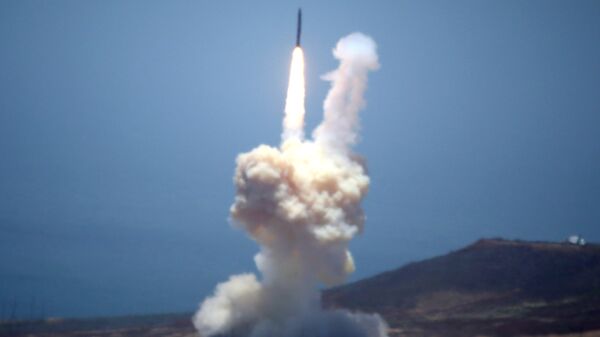When Boeing’s contract for maintaining two GMD facilities in Alaska and California is completed in 2023, it won’t simply waltz into a new deal with the Pentagon. Instead, bidding will be opened up for multiple contracts, as the MDA requires not only facility maintenance but also a new interceptor for the system.
The problem faced by the MDA is not necessarily with the GMD rocket itself, but with the weapon it delivers: the “kill vehicle” which separates from its lift rocket to home in on and directly impact an incoming missile.
Boeing was originally slated to produce the GMD’s updated interceptor, the Redesigned Kill Vehicle (RKV), which would have replaced the system’s present interceptor, the Exoatmospheric Kill Vehicle. However, Undersecretary of Defense for Research and Engineering Mike Griffin pulled the plug on the $5.8 billion RKV program in August 2019, citing “technical design problems.”
Instead, the Pentagon is looking for a system dubbed the Next Generation Interceptor (NGI), for which it will soon request proposals, according to Defense News, which noted the Department of Defense posted several requests for information on a government contracting portal last month.
The GMD contains 44 interceptor missiles in silos outside Fort Greely, Alaska, and Vandenberg Air Force Base, California, as well as a host of support facilities designed to maintain the missiles for sudden launch and to detect targets and guide the missiles toward them when the moment comes. Boeing’s 2018 contract provided for building 20 new missiles as well as another silo.
According to Defense News, the new contract could possibly be split into as many as five pieces: one would provide the NGI system itself; another would maintain older interceptors; a third would take care of ground systems; a fourth would work with the military to actually operate the GMD; and a fifth would handle all questions of logistics and testing.
“We are going to make sure that ground systems, sensors and fire control, all the rest of the system - we have the opportunity to inject that competition because I think that is very important,” MDA Director Vice Adm. Jon Hill said at an event last month, according to Defense News.
“I will tell you that our lead system integrator does a great job today, and the partnerships with industry within that construct do a great job, but we think that it’s so large and complex we should be doing everybody a favor by being able to split that up without losing the integration among all those pieces,” Hill said, “so our intent is to move in that direction.”

